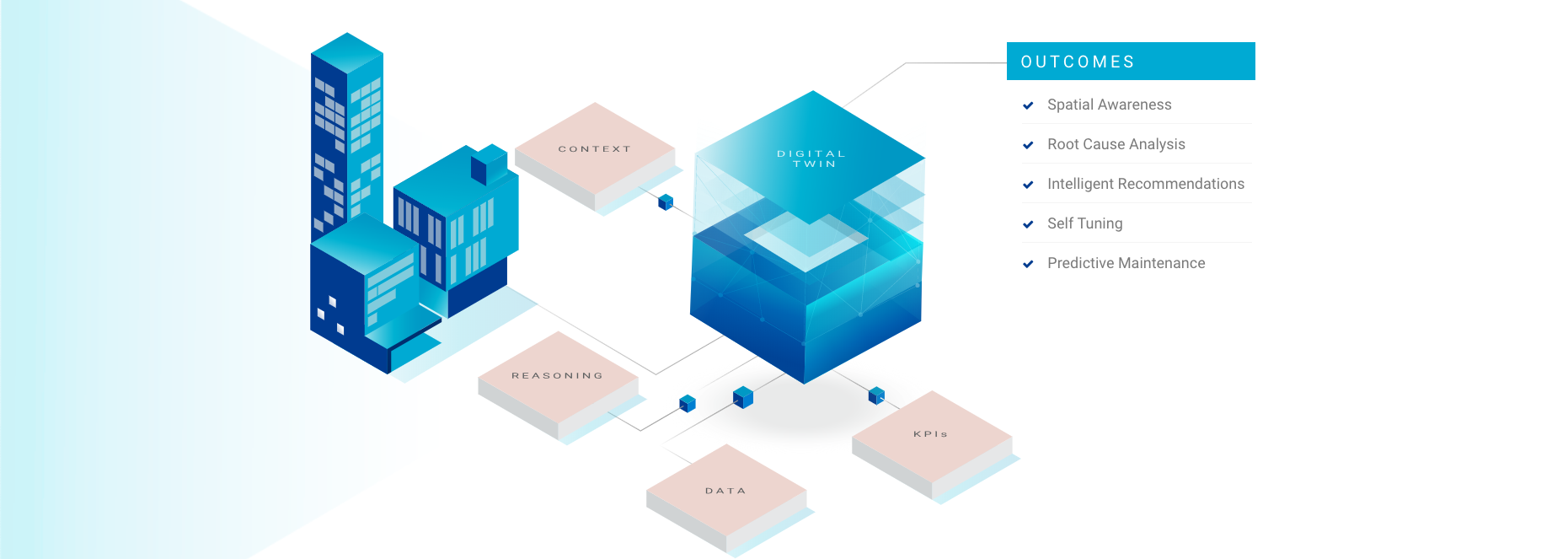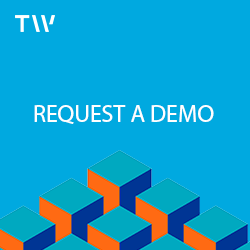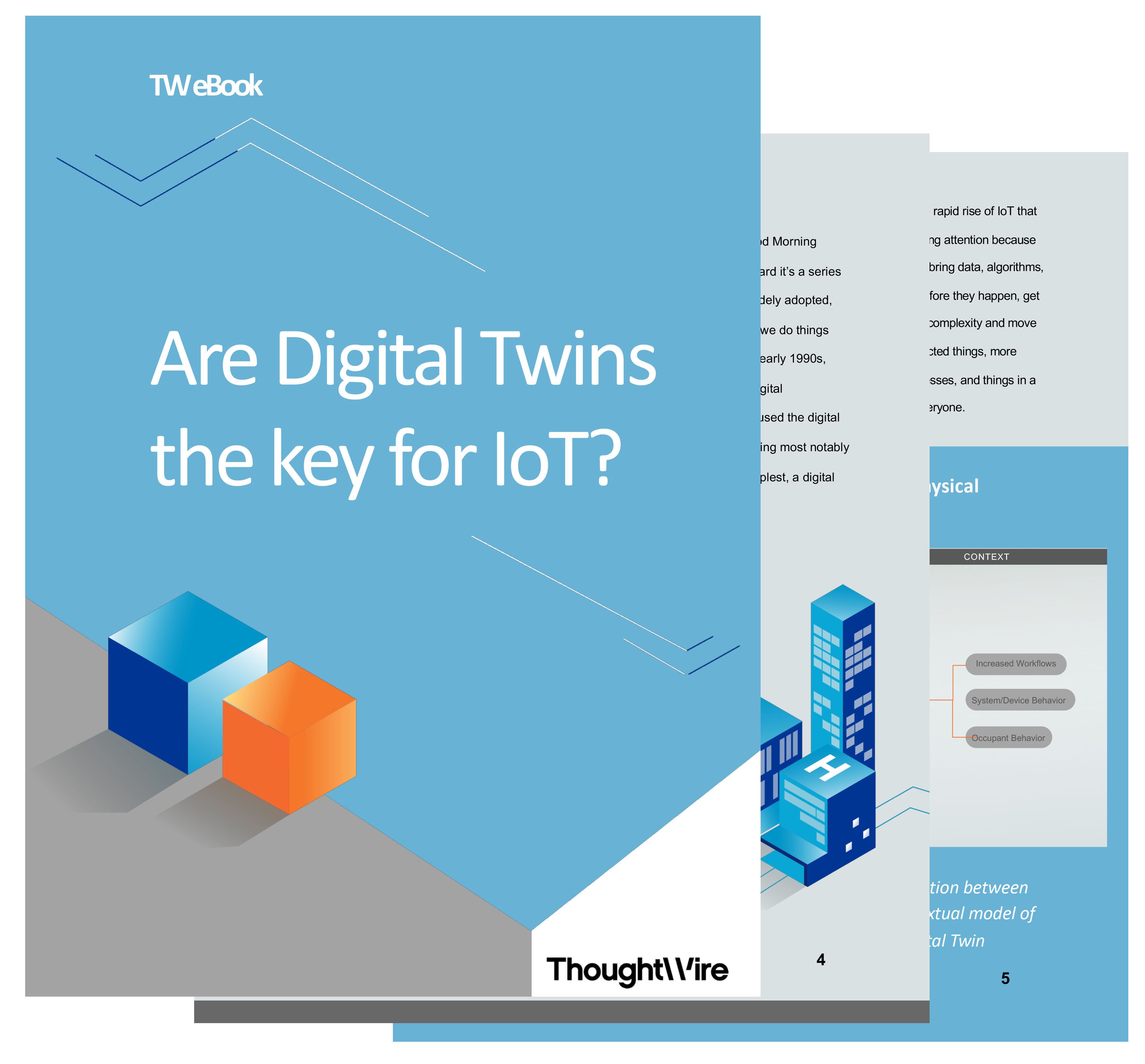Digital twins have evolved significantly over the past several years and are emerging as an exciting technology -- one that’s especially promising for the smart building sector. In fact, digital twins have already demonstrated that they can help solve big challenges in various built environments.
Yet, despite the level of discussion around digital twins, there is still confusion over what a digital twin is and whether or not they will make a lasting impact on the industry. Like many new technologies, they’re facing the ‘trough of disillusionment’ and, in some cases, are being misunderstood or mischaracterized.This article aims to clear up confusion about what a digital twin is -- and is not -- in the context of the smart buildings sector.
In this article, you’ll find answers to these four important questions:
- How do smart building digital twins work?
- What problems do smart building digital twins solve?
- What are the benefits of a smart building digital twin?
Understanding digital twin technology is crucial to staying ahead in the competitive smart building space -- especially since Gartner reported in 2018 that 13% of organizations implementing Internet of Things (IoT) projects are already using digital twins, and another 62% are in the process of planning or establishing a digital twin.
What is a Smart Building Digital Twin?
To answer this question, let’s start by looking at what a digital twin is. At its simplest, a digital twin is a virtual replica of a physical product, process, or system. Not simply a digital mock-up of the physical environment, a digital twin is the contextual model of an entire organization and its operation. Digital twins bring together data from subsystems and from real-time interaction between people, process and connected things.
Traditionally, digital twins were used to replicate single assets, such as wind turbines or jet engines and were focused on use cases like anomaly detection and predictive maintenance, with the objective of trying to increase the lifespan and reliability of these assets. In recent years, however, they’ve grown to become more complex and now often connect not just one asset, but rather systems of assets or even entire organizations, with the objective of understanding how assets, people and workflows work together to deliver business outcomes. The expansion of the digital twin means that they can now be used for a variety of new use cases, as well as monitor key performance indicators (KPIs) that matter to a business.
A smart building digital twin, then, is a contextual model of an entire smart building environment. It brings together IT and OT systems, IoT sensors and third party data, and contextualizes this with information about processes and people, resulting in a dynamic digital replica that can be used to solve a wide variety of issues. The digital twin of a smart building is not just a digital replica of physical assets, but rather is a complex model of how people and processes interact with their environment.

How do Smart Building Digital Twins Work?
A smart building digital twin essentially acts as a bridge between the digital and physical worlds. It does so by using connected sensors and IoT devices to collect real-time data about physical items. This data is then combined with context and processed and is used to understand, analyze, manipulate and optimize processes within a smart building.
In order to implement a smart building digital twin, four key enabling factors are needed:
- Data. Data from across the entire smart building is needed, such as data about people, processes, connected devices, operational building systems, IT and external information like weather or transit feeds.
- Context. Context includes real-time information about the actual state of the building, what actions occupants are taking, the behaviour of the devices and the state of the workflows.
- Reasoning. A method for applying reasoning to data is needed to drive action. Most commonly, reasoning is based on asynchronously processed rules, artificial intelligence (AI) or machine learning (ML) models, or temporal reasoning for varied frequency of events.
- Key Performance Indicators (KPIs). KPIs are required to provide meaningful business context and to ensure alignment between objectives and performance measurement.
What Problems do Smart Building Digital Twins Solve?
Digital twins are exciting because they’re able to solve old problems with new speed and insight, including how to improve efficiencies, optimize processes, detect problems before they occur and innovate for the future. More than just that, though, digital twins open up new possibilities. By bridging the gap between operations and occupants, digital twins create a new understanding of how operations impact people and how people impact operations.
Have you ever been faced with any of the following problems:
- Plateaued operational efficiency;
- Lack of full visibility into the space, such as: where assets such as HVAC have been installed, what changes occupants have made, or what new sensors have been added;
- Lack of bi-directional control to triage issues without sending building engineers to investigate low level alerts;
- Discontent of occupants with their space;
- Lack of actionable data to drive decision making; or
- Inability to move from reactive to proactive maintenance.
These are common smart building challenges that digital twins can help solve. Digital twins help solve these problems by providing a contextual model of the past, present and future that can be manipulated, analyzed and optimized.
Some people think that digital twins are synonymous with 3D visualizations, however this is not the case. A digital twin is not a building information model (BIM). While 3D visualizations can be constructed using insight from a digital twin, sophisticated 3D visualizations are often costly to design and maintain, and don’t always provide the insights required to manage the realities of operations. In many cases, insight from a digital twin can be accessed in other ways that are more cost effective and useful for problem-solving, such as a 2D floor plan or dashboard.
What are the Benefits of a Smart Building Digital Twin?
By providing a contextual model of your building and operations, smart building digital twins offer:
- Transformative spatial awareness
- Analyses of root causes
- Intelligent recommendations
- Ability to self-tune
- Insight needed for predictive maintenance
They reduce friction and orchestrate information between occupants and operations, providing a better approach to achieving business outcomes.
Together, this means smart building digital twins benefit everyone in the building -- from the owner and operator, to the building manager, to the tenants and their employees. They do so by allowing data, workflows, and human behaviours in the portfolio to be analyzed in real-time and by enabling immediate action to be taken to optimize performance/conditions.
Moreover, a smart digital twin is valuable at every stage of the asset value chain, including the design, build, commission, operate and maintain stages. As more data gets added, digital twins get smarter and are eventually able to be used for scenario planning and what-if analyses. For these reasons, digital twins future-proof assets over the long-term.
Want to know how ThoughtWire can digitally transform your building? Schedule a live demo with us.





